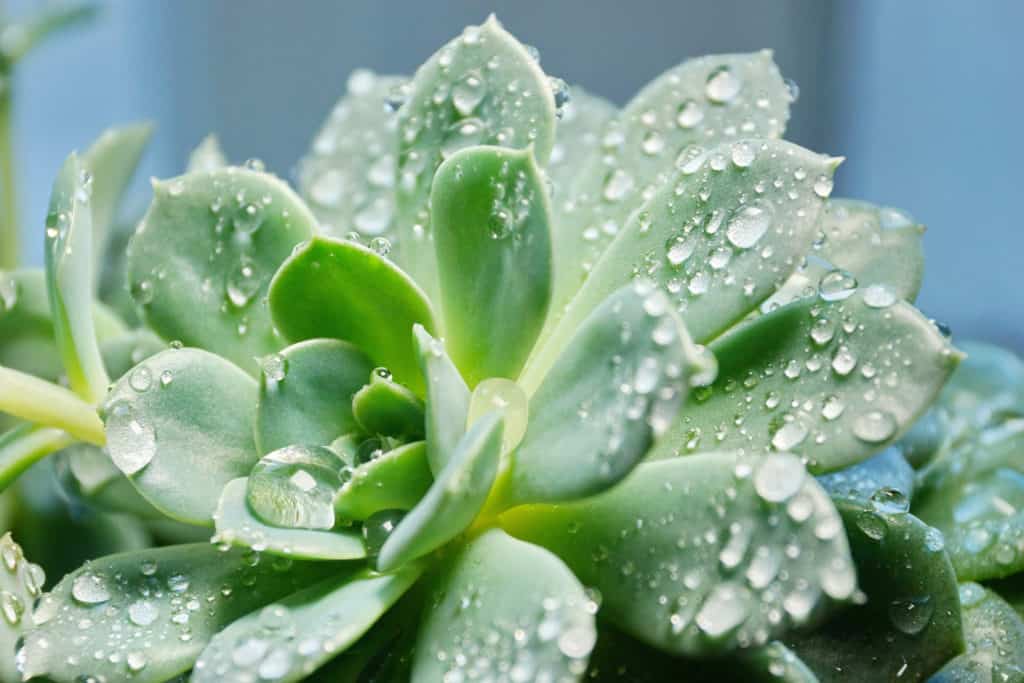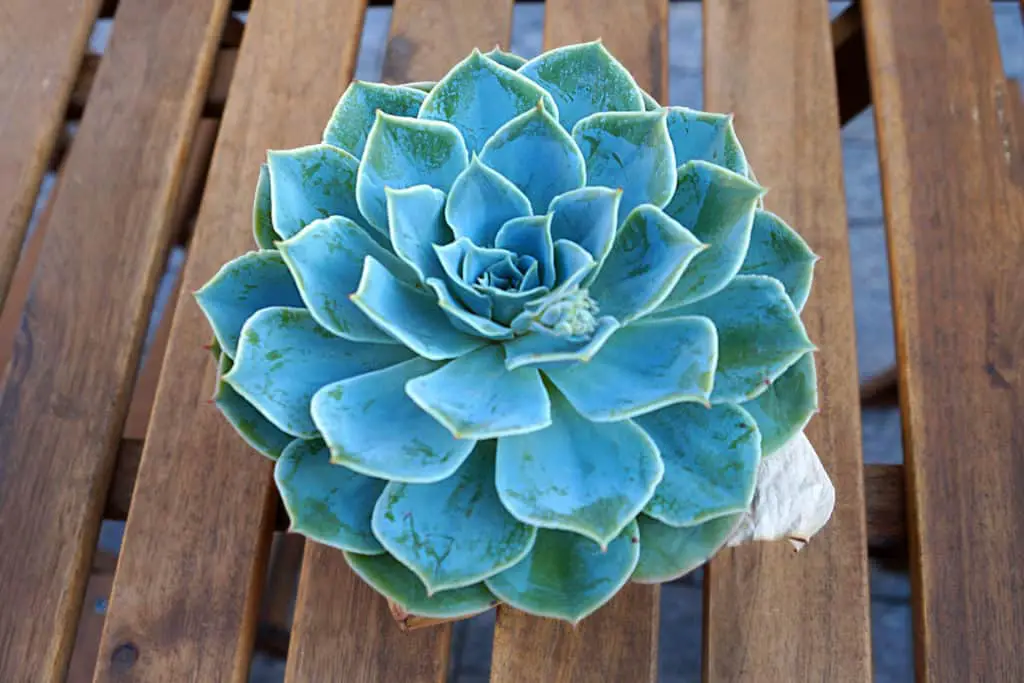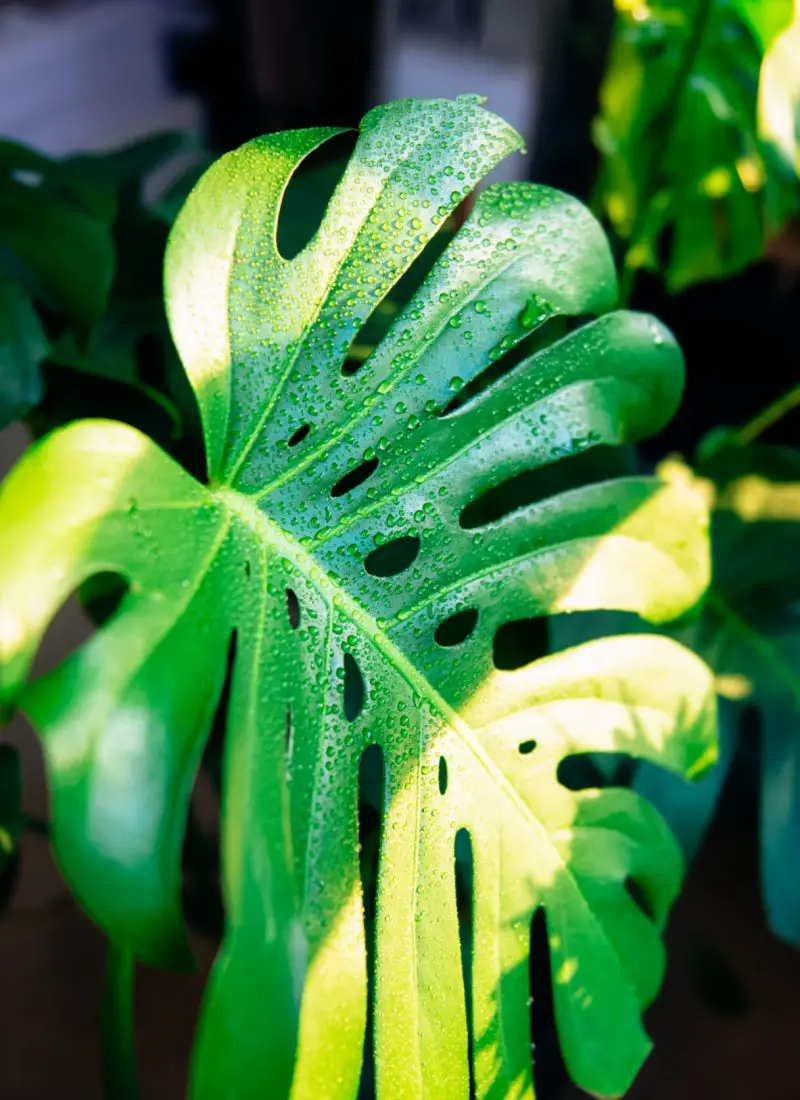
Echeverias are one of the many beginner-friendly succulents to take care of. But say you have a momentary lapse in plant care, and your Echeveria starts losing leaves.
Firstly, don’t panic. Secondly, don’t write off your Echeveria as a lost cause just yet because chances are, you can still save them! Have a read below to troubleshoot your succulent’s particular problem:
(As an Amazon Associate, I earn from qualifying purchases.)
Table of contents
- 1. Overwatering, which Causes Rotting Roots & Loss of Foliage
- 2, Underwatering, which Causes Dried Up Fallen Leaves
- 3. Excessive Direct Exposure to Full Sun with No Shade
- 4. Temperature Spike & Fluctuations Causing Plant Stress
- 5. Lack of Nutrients in the Soil to Promote Further Growth
- 6. Natural Growth Promoting New Leaves And Shedding Older Leaves
1. Overwatering, which Causes Rotting Roots & Loss of Foliage

This is a tale as old as time in the houseplant world. As you may know, overwatering opens up a world of hurt for plants, including Echeverias. Look out for mushy leaves and rotting roots in the soil – this is a sign of an overwatered Echeveria.
The only way to solve this problem is by doing the following steps:
- Remove any damaged roots, stem, and leaves off the plant. Be sure to use a sterilized cutting tool, wiping it down with alcohol wipes in between cuts. This prevents any pathogens from transferring to other parts of the plant.
- Repot your succulent in fresh, dry soil (in a different pot)
- Do not water the plant until the soil is completely dried out. This is crucial for your Echeveria’s recovery. Give it a week or so before checking with the chopstick method if it’s time to give it a thorough soak.
- Monitor your plant and give it the best care you can. It’s a waiting game at this point so pay extra attention to it for the time being.
This procedure is somewhat similar to fixing root rot in houseplants. You can read more about the topic in this article here.
Here are a few tips to help you prevent drowning your Echeveria:
- Use a terracotta pot. These are more porous and help to evaporate water faster in the soil.
- Use an appropriate-sized pot 1-2 inches bigger than the succulent’s rootball. You want it to be slightly compact to prevent any dead soil zone where water can accumulate. Pathogens will likely thrive in a dead soil space and eventually feast on the roots that try to conquer the dead zone. This is why it is important not to get too big of a pot for your plants.
- Use a pot with sufficient drain holes. This will help remove excess water from the soil every time you water.
- Use a well-draining cactus & succulent soil mix. You can also make your own by mixing 50-50 portions of potting soil and aerating material such as perlite, vermiculite, gravel, and coarse sand. This ensures that the water drains quickly through the soil without retaining it for too long.
- Maintain a good watering practice to always check the soil beforehand. Use the chopstick method to ensure it is completely dried out first. Remember that succulents are drought-tolerant – they can handle having dry periods. If anything, they can bounce back from being underwatered to overwatering any day.
- Water around the soil and not from the top of the plant. Wet leaves may cause pathogens to latch on the leaves and develop diseases.
2, Underwatering, which Causes Dried Up Fallen Leaves

If the fallen leaves are brittle, crisp, and wrinkled, your succulent is likely underwatered. Just because your Echeveria can handle a dry environment for a bit, that doesn’t mean it’s an invitation to completely stop watering them. You are the water bringer, and they depend on you to give them their source of life and nutrients. But only like once a week or so because they don’t like helicopter plant-parenting.
Luckily, they’ll still live. Here’s what you can do to perk it back up:
- Give the plant a thorough soaking around the soil several times until water drains out from the bottom.
- Ensure to wait for the soil to dry out entirely in a week before watering again.
Don’t worry about those fallen leaves; rest assured that fresh ones will start growing again to replace them.
3. Excessive Direct Exposure to Full Sun with No Shade

There are two reasons this may be happening:
- The leaves are becoming sunburned, ultimately drying and falling off the plant. A change of color on the foliage is a symptom of the plant receiving too much light. If the new growth is burned like in this picture then its probably sunburn.
- The succulent is getting too much energy from the sun and is dropping older leaves to stimulate new growth.
Whichever the case, the solution is to move the plant to a shadier location. This can be as simple as covering the window with a curtain or inching your succulent just a teeny wee bit to the side, preferably under the shade of a taller plant. Give it a few days, and your Echeveria will eventually recover.
4. Temperature Spike & Fluctuations Causing Plant Stress

There are a few ways this could happen:
- Being placed near radiators or air vents
- Drafts from open windows or doors
- Overexposure to the hot sun
When the overall temperature goes up and down like a death roller coaster, Echeverias will start showing its displeasure. Symptoms may include faded dry leaves, leggy growth, and a total killjoy mood to the most fun and adrenaline-driven carnival rides ever.
The best thing to do is immediately transfer your Echeveria to a cooler area with a reasonably good amount of sun. Again, don’t worry about the fallen leaves; newer ones will eventually develop at the top. Just let your big baby Echeveria recover in the meantime.
5. Lack of Nutrients in the Soil to Promote Further Growth

Generally, succulents in the wild don’t need much fertilizers to develop; they do just fine even in poor-nutrient soil. As houseplants, this is a different story altogether. They live in sterile potting media with limited nutrients from added compost or slow-release fertilizers.
Once these resources are depleted, Echeverias will preserve their remaining energy and shed its leaves. The fewer leaves there are, the fewer nutrients to be divided among its foliage. So the solution is to fertilize the succulent once a month.
When fertilizing cacti and succulents, a good rule of thumb is always giving half or less than instructed. These are still succulents that are not used to having much fertilizer, so they are more likely to experience fertilizer burn. Always err on the side of caution and feed them less than you think they need.
6. Natural Growth Promoting New Leaves And Shedding Older Leaves

One of the things people don’t expect of Echeverias losing leaves is that it is just natural growth. If all the dried and fallen leaves come from the base of the plant, then you can rest easy. It’s the plant’s way of redirecting its energy to newer growth at the top foliage, discarding older leaves at the base.
You can easily pull these leaves off when you notice them, or you can let them fall naturally. Just be sure to clear any fallen leaves from the soil to prevent pathogens from growing and feasting on them.
With these helpful tips, I hope your Echeveria gets better so you can keep it around longer in your home. As always, happy planting! 😀
References:
https://plants.ces.ncsu.edu/plants/echeveria/
https://plants.ces.ncsu.edu/plants/echeveria-elegans/
https://gardeningsolutions.ifas.ufl.edu/plants/ornamentals/echeveria.html
https://gardeningsolutions.ifas.ufl.edu/plants/ornamentals/succulents.html
https://extension.wvu.edu/lawn-gardening-pests/indoor-plants/succulents-101
https://hort.ifas.ufl.edu/floriculture/pdfs/crop_production/Cacti%20and%20Succulents_ENHFL04-006.pdf
https://succulentplants.info/echeveria-problems-a-gardeners-nightmare/







Leave a Reply